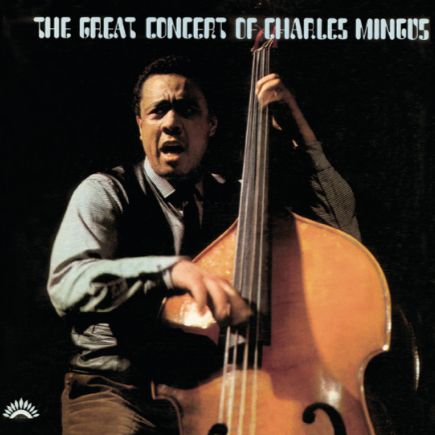Sophisticated Lady: élégance voilée et mélancolie en demi-teinte
Composée par Duke Ellington en 1932 et enregistrée pour la première fois l’année suivante, Sophisticated Lady s’impose rapidement comme l’un des grands standards du jazz. Les paroles, ajoutées plus tard par Irving Mills et Mitchell Parish, n’ont jamais éclipsé la puissance évocatrice de la version instrumentale, où se mêlent sophistication, retenue et profondeur émotionnelle.
À l’origine, Ellington conçoit cette pièce comme un hommage aux femmes de la haute société, raffinées et cultivées, à l’image de ses anciennes institutrices. «En hiver, elles enseignaient, et en été, elles parcouraient l’Europe», confiait-il. Cette élégance extérieure, modèle d’un certain idéal féminin, masque cependant une mélancolie subtile, que la musique suggère avec une finesse remarquable.
L’écriture d’Ellington se distingue ici par son économie de moyens et son efficacité expressive. Sophisticated Lady repose sur une mélodie lente, sinueuse, souvent interprétée avec un phrasé souple et un tempo étiré. Le solo de saxophone, central dans la plupart des versions, incarne cette tension entre grâce formelle et émotion contenue.
Si les paroles de Mitchell Parish viennent appuyer ce contraste —derrière l’apparence brillante, une solitude pudique—, c’est bien l’écriture instrumentale d’Ellington qui demeure au cœur de la fascination pour ce morceau.
L’intensité lyrique de Charles Mingus
Le 17 avril 1964, à Paris, le sextet de Charles Mingus livrait une interprétation magistrale de Sophisticated Lady lors de sa tournée européenne. Autour du contrebassiste, Eric Dolphy (saxophone alto, clarinette basse, flûte), Johnny Coles (trompette), Clifford Jordan (saxophone ténor), Jaki Byard (piano) et Dannie Richmond (batterie). Le groupe devint subitement un quintette quand Coles s’effondra sur scène, victime d’un ulcère — un drame qui conféra une gravité particulière à la soirée.
Admirateur de Duke Ellington, Mingus revendiquait son héritage sans jamais l’imiter. Dans Sophisticated Lady, il transforme la mélodie raffinée du maître en une œuvre chargée d’intensité émotionnelle et de liberté. Son interprétation se distingue par une architecture rythmique souple, des ruptures audacieuses et une richesse harmonique qui témoignent de son génie d’arrangeur.
La contrebasse, cœur battant de l’ensemble, devient ici une voix soliste, tour à tour lyrique et rugueuse. Dolphy y ajoute des envolées d’une expressivité poignante, tandis que Byard apporte un contrepoint à la fois swing et impressionniste. Le groupe évolue comme un organisme vivant, oscillant entre recueillement et tension. Par cette relecture, Mingus fait de Sophisticated Lady bien plus qu’un hommage: une méditation sur la fragilité et la beauté du son, à la croisée du jazz traditionnel et de l’avant-garde.
Sophisticated Lady: elegancia velada y melancolía atenuada
Compuesta por Duke Ellington en 1932 y grabada por primera vez al año siguiente, Sophisticated Lady se impuso rápidamente como uno de los grandes estándares del jazz. La letra, añadida posteriormente por Irving Mills y Mitchell Parish, nunca eclipsó el poder evocador de la versión instrumental, donde se combinan sofisticación, contención y profundidad emocional.
En su origen, Ellington concibió esta pieza como un homenaje a las mujeres de la alta sociedad, refinadas y cultas, como sus antiguas profesoras. “En invierno enseñaban y en verano recorrían Europa”, contaba él. Esta elegancia exterior, idealizada como modelo femenino, oculta sin embargo una melancolía sutil que la música sugiere con notable delicadeza.
La escritura de Ellington se distingue aquí por su economía de medios y su eficacia expresiva. Sophisticated Lady se basa en una melodía lenta y sinuosa, a menudo interpretada con un fraseo flexible y un tempo dilatado. El solo de saxofón, elemento central en la mayoría de versiones, encarna esa tensión entre gracia formal y emoción contenida.
Si bien la letra de Mitchell Parish subraya este contraste —detrás del brillo, una soledad pudorosa—, es la escritura instrumental de Ellington la que permanece en el centro de la fascinación por esta obra.
La intensidad lírica de Charles Mingus
El 17 de abril de 1964, en París, el sexteto de Charles Mingus ofreció una interpretación magistral de Sophisticated Lady durante su gira europea. A su alrededor estaban Eric Dolphy (saxofón alto, clarinete bajo, flauta), Johnny Coles (trompeta), Clifford Jordan (saxofón tenor), Jaki Byard (piano) y Dannie Richmond (batería). El grupo se convirtió repentinamente en quinteto cuando Coles se derrumbó en el escenario, víctima de una úlcera, un suceso trágico que otorgó una gravedad particular a la velada.
Admirador de Duke Ellington, Mingus asumía su herencia sin nunca imitarlo. En Sophisticated Lady, transforma la melodía refinada del maestro en una obra cargada de intensidad emocional y libertad expresiva. Su interpretación se distingue por una arquitectura rítmica flexible, rupturas audaces y una riqueza armónica que reflejan su genio como arreglista.
El contrabajo, corazón palpitante del conjunto, se convierte aquí en una voz solista, ora lírica, ora áspera. Dolphy aporta vuelos de gran expresividad, mientras Byard ofrece un contrapunto que combina swing e impresionismo. El grupo evoluciona como un organismo vivo, oscilando entre contemplación y tensión. Con esta relectura, Mingus convierte Sophisticated Lady en mucho más que un homenaje: una meditación sobre la fragilidad y la belleza del sonido, en el punto de encuentro entre el jazz tradicional y la vanguardia.
Sophisticated Lady: eleganza velata e malinconia trattenuta
Composta da Duke Ellington nel 1932 e registrata per la prima volta l’anno successivo, Sophisticated Lady si afferma rapidamente come uno dei grandi standard del jazz. Il testo, aggiunto in seguito da Irving Mills e Mitchell Parish, non ha mai oscurato la forza evocativa della versione strumentale, in cui si intrecciano raffinatezza, contenimento ed emotività profonda.
In origine, Ellington pensò questo brano come un omaggio alle donne dell’alta società, colte e sofisticate, come le sue ex insegnanti. “In inverno insegnavano e d’estate giravano per l’Europa”, raccontava. Questa eleganza esteriore, immagine di un ideale femminile, cela tuttavia una sottile malinconia che la musica suggerisce con grande finezza.
La scrittura di Ellington si distingue qui per l’economia dei mezzi e l’efficacia espressiva. Sophisticated Lady si fonda su una melodia lenta e sinuosa, spesso interpretata con fraseggio morbido e tempo disteso. L’assolo di sax, centrale nella maggior parte delle versioni, incarna questa tensione tra grazia formale ed emozione trattenuta.
Se le parole di Mitchell Parish mettono in evidenza questo contrasto —dietro lo splendore, una solitudine pudica—, è la scrittura strumentale di Ellington a rimanere al cuore del fascino esercitato da questo brano.
L’intensità lirica di Charles Mingus
Il 17 aprile 1964, a Parigi, il sestetto di Charles Mingus offrì un’interpretazione magistrale di Sophisticated Lady durante il suo tour europeo. Accanto al contrabbassista c’erano Eric Dolphy (sax contralto, clarinetto basso, flauto), Johnny Coles (tromba), Clifford Jordan (sax tenore), Jaki Byard (pianoforte) e Dannie Richmond (batteria). Il gruppo divenne improvvisamente un quintetto quando Coles crollò sul palco, vittima di un’ulcera — un evento drammatico che conferì una gravità particolare alla serata.
Ammiratore di Duke Ellington, Mingus rivendicava la sua eredità senza mai imitarlo. In Sophisticated Lady, trasforma la melodia raffinata del maestro in un’opera carica di intensità emotiva e libertà espressiva. La sua interpretazione si distingue per un’architettura ritmica flessibile, rotture audaci e una ricchezza armonica che testimoniano il suo genio di arrangiatore.
Il contrabbasso, cuore pulsante dell’ensemble, diventa qui una voce solista, a tratti lirica e a tratti ruvida. Dolphy aggiunge slanci di grande espressività, mentre Byard offre un contrappunto che unisce swing e impressionismo. Il gruppo si muove come un organismo vivente, oscillando tra raccoglimento e tensione. Con questa reinterpretazione, Mingus fa di Sophisticated Lady molto più di un omaggio: una meditazione sulla fragilità e la bellezza del suono, tra il jazz tradizionale e l’avanguardia.
Sophisticated Lady: veiled elegance and understated melancholy
Composed by Duke Ellington in 1932 and first recorded the following year, Sophisticated Lady quickly established itself as one of the great jazz standards. The lyrics, later added by Irving Mills and Mitchell Parish, never overshadowed the evocative power of the instrumental version, which blends sophistication, restraint, and emotional depth.
Originally, Ellington conceived the piece as a tribute to refined, cultured women of high society—modeled after his former schoolteachers. “In winter they taught, and in summer they toured Europe”, he once said. This outward elegance, an idealized vision of femininity, is gently infused with a subtle melancholy, which the music conveys with remarkable nuance.
Ellington’s writing here is marked by its economy and expressive clarity. Sophisticated Lady is built on a slow, winding melody, often delivered with a supple phrasing and a stretched tempo. The saxophone solo, central in most renditions, reflects the tension between formal grace and inner emotion.
While Mitchell Parish’s lyrics echo this contrast —a quiet solitude behind the polished façade— it is Ellington’s instrumental writing that remains at the heart of the enduring allure of this piece.
The lyrical intensity of Charles Mingus
On April 17, 1964, in Paris, Charles Mingus’s sextet delivered a masterful performance of Sophisticated Lady during his European tour. Surrounding the bassist were Eric Dolphy (alto saxophone, bass clarinet, flute), Johnny Coles (trumpet), Clifford Jordan (tenor saxophone), Jaki Byard (piano), and Dannie Richmond (drums). The group suddenly became a quintet when Coles collapsed on stage, suffering from an ulcer — a tragic moment that lent a particular gravity to the evening.
A devoted admirer of Duke Ellington, Mingus embraced his legacy without ever imitating him. In Sophisticated Lady, he transforms Ellington’s refined melody into a work charged with emotional intensity and freedom. His interpretation stands out for its supple rhythmic architecture, daring shifts, and harmonic richness, all hallmarks of his genius as an arranger.
The double bass, the beating heart of the ensemble, becomes a solo voice — at times lyrical, at times raw. Dolphy contributes flights of poignant expressiveness, while Byard adds a counterpoint that blends swing with impressionism. The group moves as a living organism, oscillating between reflection and tension. Through this reinterpretation, Mingus turns Sophisticated Lady into far more than a tribute: a meditation on fragility and the beauty of sound, at the crossroads of traditional jazz and the avant-garde.


